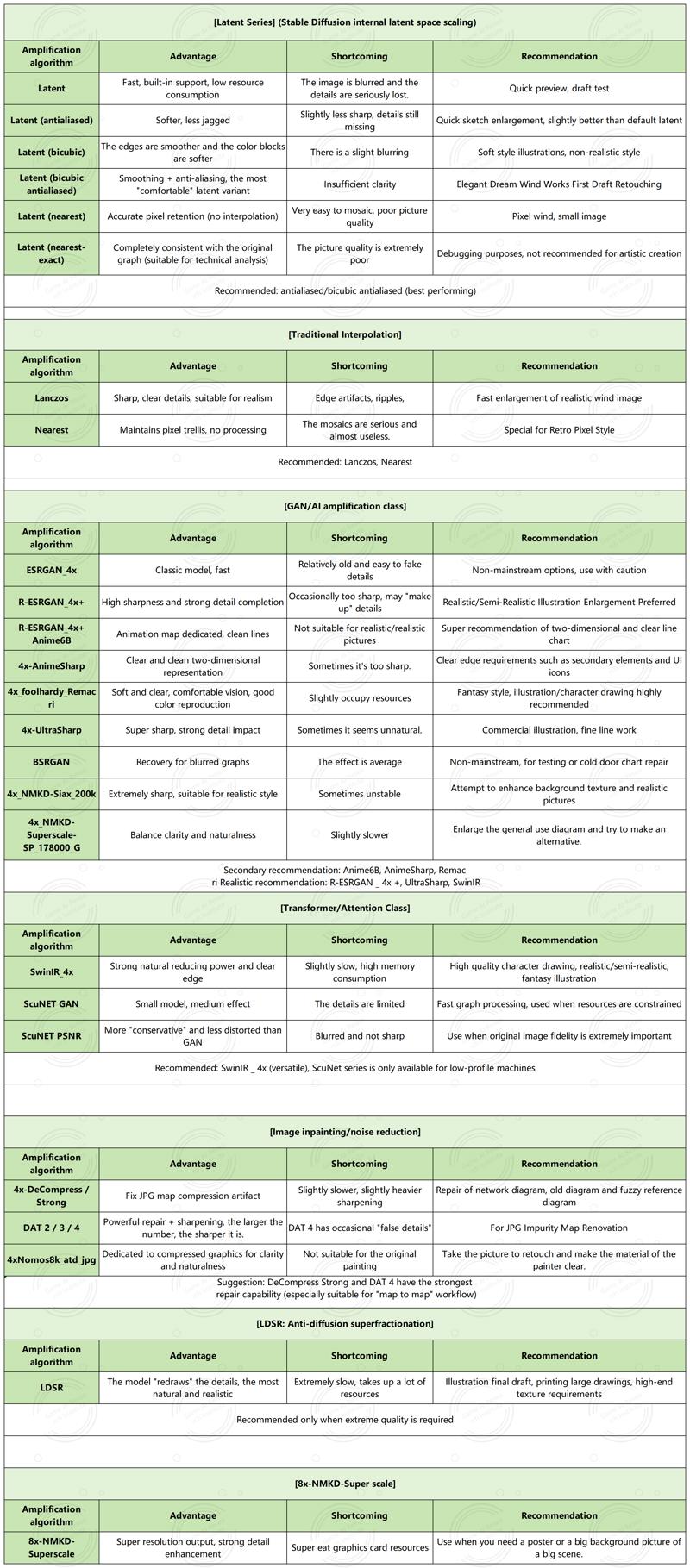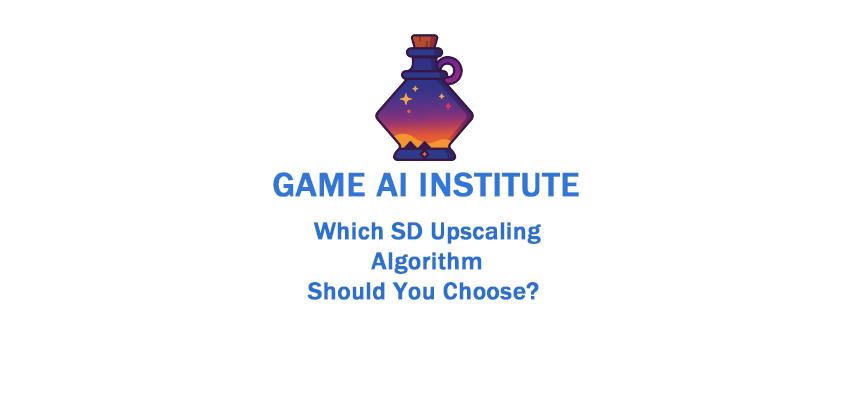Ⅰ. Definition:
Stable Diffusion (referencing SDXL) uses "High-Resolution Fix" to enlarge an initially generated low-resolution image, while striving to maintain clarity and detail, reducing blur or aliasing effects.
Ⅱ. Advantages and Disadvantages Explanation:
A detailed summary of the advantages and disadvantages of high-resolution fix (Highres. fix) upscaling algorithms, clearly grouped to help us make informed decisions. I will prioritize explaining their image quality performance, stylistic tendencies, resource consumption, and suitable scenarios. (The table below is a summary of test cases from the Game Icon Research Institute.)
Quick Sketch Upscaling: Latent (antialiased), bicubic antialiased
Detailed Realistic Images: R-ESRGAN_4x+, SwinIR_4x, UltraSharp
Dreamlike Illustrations: Remacri, SwinIR_4x
Anime Style: Anime6B, AnimeSharp, Remacri
Network Image Restoration: DAT 4, DeCompress Strong, Nomos8k
Large Print Output: LDSR, 8x Superscale

Ⅲ. Summary:
SDXL supports various upscaling algorithms for high-resolution fixes, which can generally be divided into six categories based on their principles:
① Latent interpolation, ② Traditional mathematical interpolation, ③ GAN neural network upscaling, ④ Transformer/attention mechanism upscaling, ⑤ Image restoration models, ⑥ Diffusion reconstruction.
The Latent series (e.g., Latent antialiased / bicubic) operates quickly but results in blurred images, suitable only for sketches or previews. Traditional interpolation methods (e.g., Lanczos) are based on mathematical interpolation and offer high fidelity without aesthetic enhancement, lacking detailed recovery. GAN-based models (e.g., R-ESRGAN_4x+, AnimeSharp, Remacri) use AI to generate details and provide subjective "aesthetic enhancement," making them ideal for stylized illustrations with sharpness and visual impact. Among them, Anime6B/AnimeSharp is excellent for anime line art, while UltraSharp, Remacri, and SwinIR_4x excel in dreamlike or realistic illustrations. SwinIR_4x, as a transformer-based model, restores images naturally with clear edges and is suitable for high-quality character art or fantasy illustrations. Image restoration models (e.g., DAT 4, 4x-DeCompress) are adept at recovering details from compressed or network images, ideal for "image-to-image" workflows. LDSR uses a diffusion process to generate high-quality images, offering the best quality but being time-consuming, suitable only for final drafts or print outputs. For ultra-large image outputs, such as 4K/8K, 8x-NMKD-Superscale and similar models can be used. By selecting the right upscaling model based on the desired style, target resolution, and device capabilities, you can significantly enhance the final image quality.





